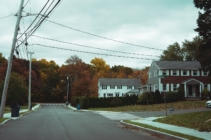
Reminder: Owner Occupancy Ratios in condo complexes are irrelevant if a buyer intends to occupy the unit.
Owner Occ Ratios can be as low as 10% and Fannie or Freddie will still finance the unit.
FHA and investment purchases, however, require owner occ ratios to be over 50%.
CASH OUT REFIS
Almost 90% of all refis prior to the 2008 meltdown were “cash out,” meaning that borrowers increased the size of their mortgage when they refinanced in order to garner extra cash.
After the meltdown, cash out refinances nearly dried up but have been steadily climbing and now constitute about 60% of all refinances.
There are hordes of blogs and columns on the internet claiming that “cash out” refinances were responsible for the mortgage meltdown, and that may have been the case b/c lending guidelines were so much looser.
The case for impending doom is much weaker today b/c lending guidelines are so much stricter and refinancing borrowers are so much more responsible in general, as memories of the meltdown still loom.
CASH OUT RULES
Borrowers are allowed to increase their loan amount, without incurring “cash out” charges, as long as the extra funds go towards closing costs.
Financeable closing costs can include one-time fees such as title insurance, escrow, appraisal fees, etc., and recurring costs such as property taxes, insurance, HOA dues and interest.
In California, borrowers are also allowed to get the lesser of $2,000 or 1% of the loan amount as “cash” and still avoid “cash out” charges.
In Texas, borrowers are not allowed to get any cash back unfortunately.
CASH OUT CHARGES AND LIMITATIONS
Loan-to-Value Ratios
Cash out refis are limited to 80% loan-to-value ratios in most cases.
Rate and Term refis (where loan amounts do not increase), in contrast, are available up to 95% loan-to-value ratios for conforming loans and up to 96.5% for FHA loans.
VA loans (for veterans) are the exception to the cash out rules, as they allow for 100% loan-to-value cash out loans.
Affect on Rate/Cost of Cash Out
The charges for cash out loans range from as little as 3/8 of a point (a “point” = 1% of the loan amount) for borrowers with high credit scores and low loan-to-value ratios, all the way up to over 3 points for borrowers with low credit scores (under 640) and higher loan-to-value ratios (over 75%).
These higher fees can be absorbed or offset by rate increases from 1/8% to over a full 1%. On average, cash out refinance loans probably result in rates that are about 1/4 percent higher than a rate and term refinance.
Why Cash Out Rates Are Higher
Cash Out Loans are deemed “riskier” by lenders and that is why the rates are higher.
We are often asked by borrowers why our cash out rate quotes are higher than our purchase rate quotes in our blogs.
There are several reasons: (1) cash our rates are higher in general; (2) most of our cash out loans are “conforming” and conforming rates are higher than our best jumbo rates that we quote in this blog; and (3) we often quote higher rates for refinances so we can garner extra rebate or commission to cover closing costs on behalf of our borrowers; our “purchase rate quotes” in this blog, in contrast, are simply at “no points” with no credits for closing costs.
SHOULD BORROWERS STILL TAKE CASH OUT?
If borrowers have substantial home improvement needs, tax bills, tuition debt, or consumer debt that they are unable to pay off quickly, cash out loans always make sense even if the rates are bit higher.
When rates are this low, however, and equity levels are climbing, cash out loans make even more sense.
Jay Voorhees
Founder/Broker | JVM Lending
(855) 855-4491 | DRE# 01524255, NMLS# 335646


















